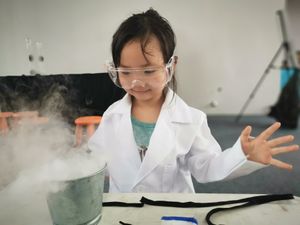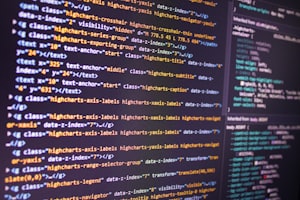Science lives on exchanging results, ideas, praise and criticism. In this pursuit, we travel vast distances to come face to face with fellow scientists at conferences and other events. While many researchers agree that mingling with colleagues is valuable, calls for more remote communication have strengthened of late. For example, a petition to allow remote presentations at several conferences has gained some high profile support in the machine learning community.
Not only can we help decarbonize science, we can also rectify inclusion issues, such as gender and racial representation.
The COVID-19 pandemic is currently giving us a glimpse of challenges and opportunities that come with remote exchange. Many legacy conferences had to go fully virtual (for example NERCCS, ICLR or FENS) and entirely new fully virtual events emerged, with great success and at massive scale (Neuromatch). The success of these events proves that the technology for effective remote conferencing is here already. On the other hand, events that had to be cancelled because they were unable to transition illuminate some of the challenges involved with this transition. Experience with organizing legacy events does not easily transfer online. Our legacy interactions are very well established, and they have worked extremely well for senior researchers. To successfully transition, we will need to be proactive in building a culture around remote communication. This presents great opportunities. Not only can we help decarbonize science, we can also rectify inclusion issues, such as gender and racial representation.
Remote Human Connections
Information exchange takes most of the time spent at a conference. Ironically, it seems like it is the most replaceable part. We could get similar information through papers, preprints, blog posts, pre-recorded talks etc. The networking part is much harder to replace. Networking is about the human connections we make. It’s about talking face to face with someone at the poster session. It’s about remembering people. Their names, their faces, what they care about, what they work on and how their work relates to our work. Defenders of traditional scientific exchange would claim that remote events won’t give enough networking opportunities to replace legacy events. This is no longer the case, as the few remote events that already exist are great networking venues. In particular, an online conference called neuromatch gained traction. Besides the main session, parallel sessions allowed PhD students and postdocs to present their research. It also featured mind-matching, a great way to facilitate one-on-one networking. Participants would be matched to six other participants, based on one or more abstracts they submitted. I had great discussions there with fellow PhD students and even PIs that I've never met before. Mind matching offers an amazing way to network at remote conferences.
The university of Geneva has another model for one-to-one interactions with their green seminar series. Their idea is that a speaker gives a remote presentation to a room full of people followed by scheduled time with some participants. For this one-on-one interaction, a special setup is reserved. A setup like this simply needs a camera, microphone, lights and a computer. Every institute should have a dedicated room with a setup like this. One of the main steps to take is to ensure that we know what kind of equipment we have, and if it's good enough to organize an online meeting.
Lights, Camera, Action
When we attend a normal scientific talk, we have some “minimal” expectations. PowerPoint slides will be projected somewhere, those slides will be well visible, the speaker will be well audible, other audience members will be mostly respectful and quiet and there will be a few minutes for questions afterwards. Virtually all scientists are aware of these expectations and know how to meet them. More importantly, institutions know which equipment we require to give a good talk.
When it comes to virtual talks, many speakers are insecure about their equipment. I recommend just talking to your friends/colleagues remotely whenever you can and ask them for their honest opinion on the quality of the exchange. If your lab supports it, making your lab meetings remote makes for a great testing environments. Also, ask your institution what equipment they have to support you. While I believe that many institutions should invest more in remote conferencing equipment, we should not expect Hollywood grade production value from scientific exchange, to remain accessible and inclusive. I think an affordable starter kit that contains the minimum equipment required could remove some barriers. This could be shared within a lab or an institute. A few commercial all-in-one solutions already exist. Time will tell if they actually meet the minimum requirements and if they are the most affordable solution.
Software is less of an issue. Most is extremely robust and makes the best of any hardware. While I don’t endorse any specific software, the scientific community has particularly embraced Zoom. However, security concerns were raised against Zoom itself but also regarding problems with unauthorized access to meetings. Time will tell if Zoom will be able to address these issues properly. Having one common software has some great advantages, like having one common language, but could also make us dependent on a commercial entity.
Inertia
There will always be people who think remote exchange is not the right way to go. During a pandemic they will of course be willing to work remotely. As soon as social distancing measures will be lifted, most people will go back to their mingling lifestyle. Arguments will focus on how small the carbon footprint of scientists is in absolute terms: if all scientists stopped flying today, it would not solve the climate emergency. This argument is used across countries and industries by everyone who wants to carve out their own slice of carbon privilege. It is completely expected that academics would use the same argument, especially since we believe our scientific work is very important. However, in 2050 nobody will ask if your work is important enough to take that flight. People will ask how you are offsetting your flight and legitimate offsetting will be expensive. Your work will still be important but flying will be less so.
We have all the tools to make legacy formats remote. To sustain the staggering progress we've recently seen, and to build on it, we must shape a community and a culture around remote exchange. The best way to help with this is to participate yourself. You can do it today. Invite a collaborator to give a remote presentation. Give opportunities to present remotely when you are organizing events and ask organizers for remote options. We have the unique opportunity to define the future of scientific exchange in a way that benefits scientists and addresses the climate crisis.
About the author:
Daniel Müller-Komorowska is a PhD student in neuroscience. He studies the neuronal connections involved in memory. He is interested in programming with Python, modeling neuronal networks and data analysis. Follow Daniel on Twitter @scidanm.







